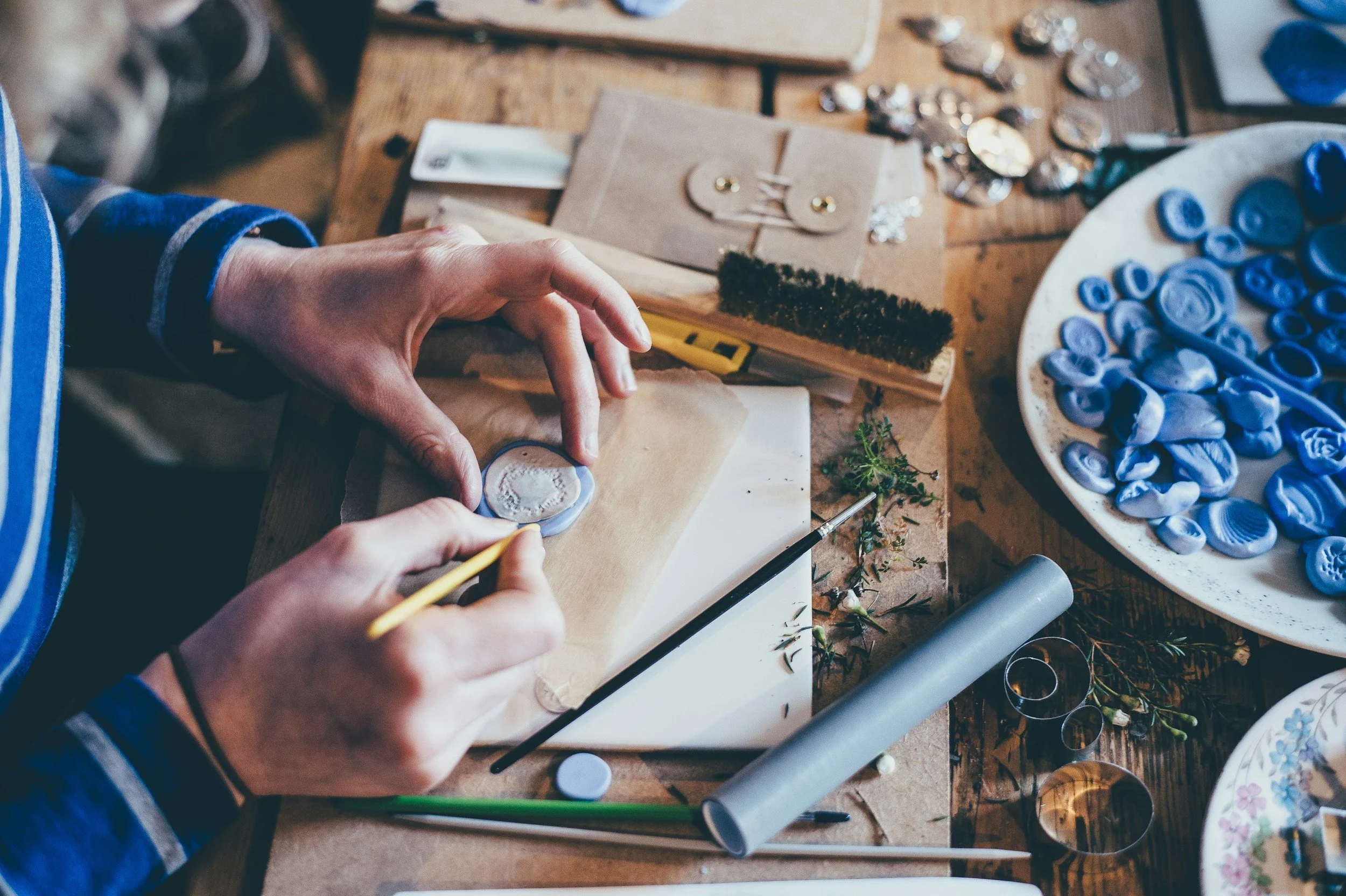Relational Art Therapy
when words are not enough
What is Art Therapy?
A TYPE OF PSYCHOTHERAPY
Art therapy is a recognised form of psychotherapy, practiced by trained art therapists (also called art psychotherapists). It combines the use of art materials with talking in a safe, supportive setting.
The focus is not on making “good art”, but on using creative expression as a pathway to explore thoughts and feelings. Together with your therapist, the process can help to reduce distress, build insight, and nurture qualities such as self-compassion, agency, and
self-worth.
A TOOL FOR EVERYONE
Art therapy can support people of all ages and at any stage of life. It can be especially meaningful for those whose lives have been touched by difficult personal or cultural experiences, illness, or disability.
Art therapy has been shown to be helpful for those living with chronic illness, grief and loss, life transitions, trauma, disabilities, anxiety and depression. It can also help to develop coping skills and reduce stress.
WHEN WORDS ARE NOT ENOUGH
Our deepest wounds don’t live in the thinking mind, they live in the body. Stress, grief, and trauma can’t always be solved with logic; they need to be felt and expressed.
Art therapy offers a way to give shape to what words can’t hold. Artistic expression becomes a tool for communication within the therapeutic process. And there is always
space for both: images and words, silence
and dialogue.
“The most powerful medication you can prescribe is the relationship.”
About me
Art Therapist in Relational Psychoanalysis
I’m Alexandra, and I hold a Bachelor’s degree in Social Work and Counseling, and a Master’s degree in Relational Art Psychotherapy. My path has led me to work with people in many different life situations, including those navigating migration, living with disabilities, moving through trauma, anxiety or depression, as well as neurodivergence, both children and adults.
In my sessions, I draw from a variety of approaches, such as Motivational Interviewing (MI), Mentalization, attachment theory, psychodynamic-based therapy, and mindfulness. But beyond technique, what matters most is the relationship we create together. I believe that healing begins in the space we share, when there is enough safety to be fully ourselves.
My practice is trauma-informed and shaped by an intersectional lens. It is a place where underrepresented voices are welcomed and diverse forms of being are embraced.
At the heart of my work is presence: meeting you with openness, curiosity, and respect. Therapy, for me, is not about fixing but about accompanying and together finding meaning, freedom, and new ways of relating.
-
An art therapy session usually unfolds in three stages: meeting, creating, and sharing.
We begin by welcoming each other, giving space for you to share how you are and anything that feels important to bring into the session. Then comes the creation stage, a time for you to work with the art materials available. Finally, we move to sharing, where we reflect together and help you make sense of your experience.
That said, every session is unique and shaped by you. Sometimes there may be no creating at all, we might simply talk. Other times, you may create without feeling the need to share. Both are part of the process, and both are okay.
-
Yes, art therapy is possible even online. The main difference is that we meet through a video platform such as Teams, and you bring whatever art materials you have available with you.
-
The length of therapy is unique to each person and depends on your needs and goals. In the first three sessions, we focus on assessment, a space for you to share about yourself and what brought you here, to try the experience of art therapy, and for us to sense together whether we are a good fit.
After this initial period, we decide on the frequency of sessions based on what feels most helpful for you. Weekly sessions are often recommended at the start, as they help to build a trusting relationship and create continuity in the process. Over time, sessions can become less frequent, as you gain new insights, tools, and perspectives to carry with you.
-
Art therapy may be right for you if you are willing to engage in a psychotherapeutic process and wish to add another form of communication beyond words. Art therapy offers a space where the creative process can help express what language alone cannot. Because it is experiential, art therapy can sometimes help you access important insights more quickly.
I will be there to guide you, holding the space for both your words and your art, and supporting you in expressing yourself in the way that feels most authentic to you. You don’t need any artistic skills; what matters most is your openness to the process. In art therapy, as in any form of therapy, the most important element is the quality of the relationship between client and therapist.
Book a free consultation or a session
Change requires courage, and it’s natural to feel some uncertainty when seeking support. To help with this first step, I offer a free
30-minute consultation.
This is a space for you to share whatever is on your mind, bring your questions, and together we can explore whether it might feel right to work with one another.


